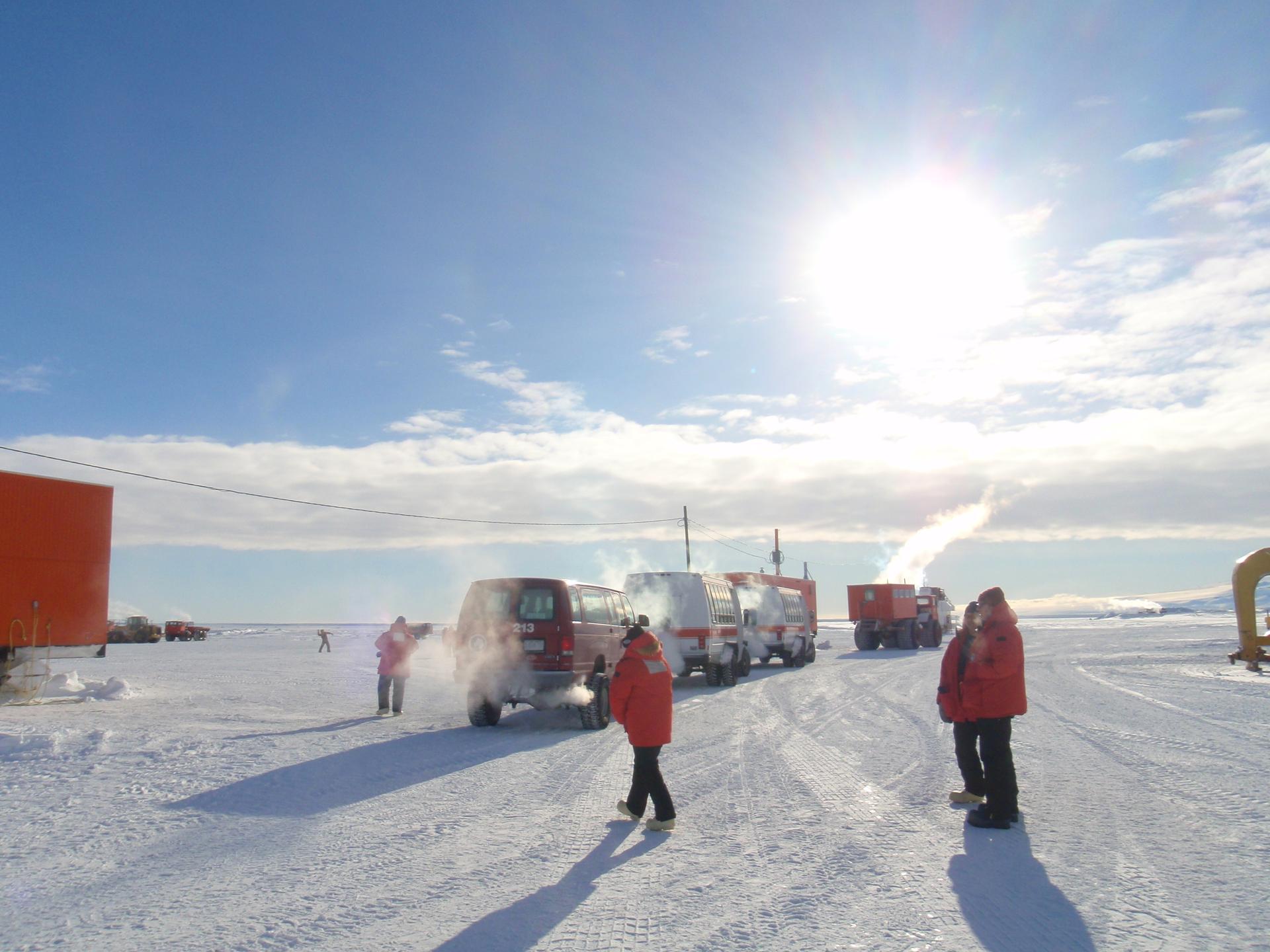Researchers discover microbial life deep beneath Antarctic ice
Shuttles idle near Pegasus Field, an airstrip that serves the McMurdo Station research facility on Antarctica’s Ross Ice Shelf.
For the first time, researchers have proven the existence of microorganisms half a mile below the icy surface of Antarctica.
“It's the first definitive evidence that there's not only life but active ecosystems underneath the Antarctic ice sheet, something that we have been guessing about for decades,” said lead researcher Brent Christner, a biology professor at Louisiana State University, in an interview with the Telegraph.
Christner's international team of researchers — known as The Whillans Ice Stream Subglacial Access Research Drilling — recently published their findings in the scientific journalNature.
The WISSARD team worked for years, using a drill to cut through the ice and retrieve samples from deep underground. In January 2013, they found what they were looking for: A lake buried 800 meters below the surface of Antarctica.
The subglacial lake, called Lake Whillans, is only about 2.2 meters deep but stretches across 60 square kilometers. Scientists collected water and sediment from the lake, painstakingly sterilizing them to ensure the samples were not contaiminated by humans or equipment.
DNA tests taken after collection proved the samples were clean, and what they found was incredible. “We are looking at a water column that probably has about 4,000 things we call species,” Christner says. “It's incredibly diverse.”
Jill Mikucki, an assistant professor of microbiology at the University of Tennessee in Knoxville and part of the research team, says the discovery of organisms that are alive and growing is a significant finding.
“It means they have a function in the ecosystem, they have a function in our planet,” Mikucki explains. “About ten percent of the earth's surface is covered with ice, yet we have so few samples from this environment. This is our first look at what these organisms actually do.”
The newly discovered microbes are similar to organisms discovered in deep sea sediment, but differ significantly because they have evolved to adapt to the extreme cold and the lack of sunlight and air. The organisms have been cut off from rest of the planet for over 100,000 years, and possibly as long as 1 million years.
Data suggests that more than 400 lakes and rivers run beneath the Antarctic ice sheet, so researchers expect to find even more diversity among these different aquatic ecosystems.
Perhaps the most intriguing aspect to this discovery is that it raises the possibility of finding similar ecosystems on planets, moons and other space objects previously thought to be uninhabitable because of their extremely cold environments.
“I think that this does nothing but strengthen the case for life on other icy bodies in the solar system and beyond,” Christner says. “The first time we went to Antarctica and the first place we selected to drill a hole, we found life. So it’s not much of a stretch that in similar conditions, like on the icy moon of Jupiter, Europa, life could exist there.”
This story is based on an interview that aired on PRI's Science Friday with Ira Flatow.
Every day, reporters and producers at The World are hard at work bringing you human-centered news from across the globe. But we can’t do it without you. We need your support to ensure we can continue this work for another year.
Make a gift today, and you’ll help us unlock a matching gift of $67,000!
